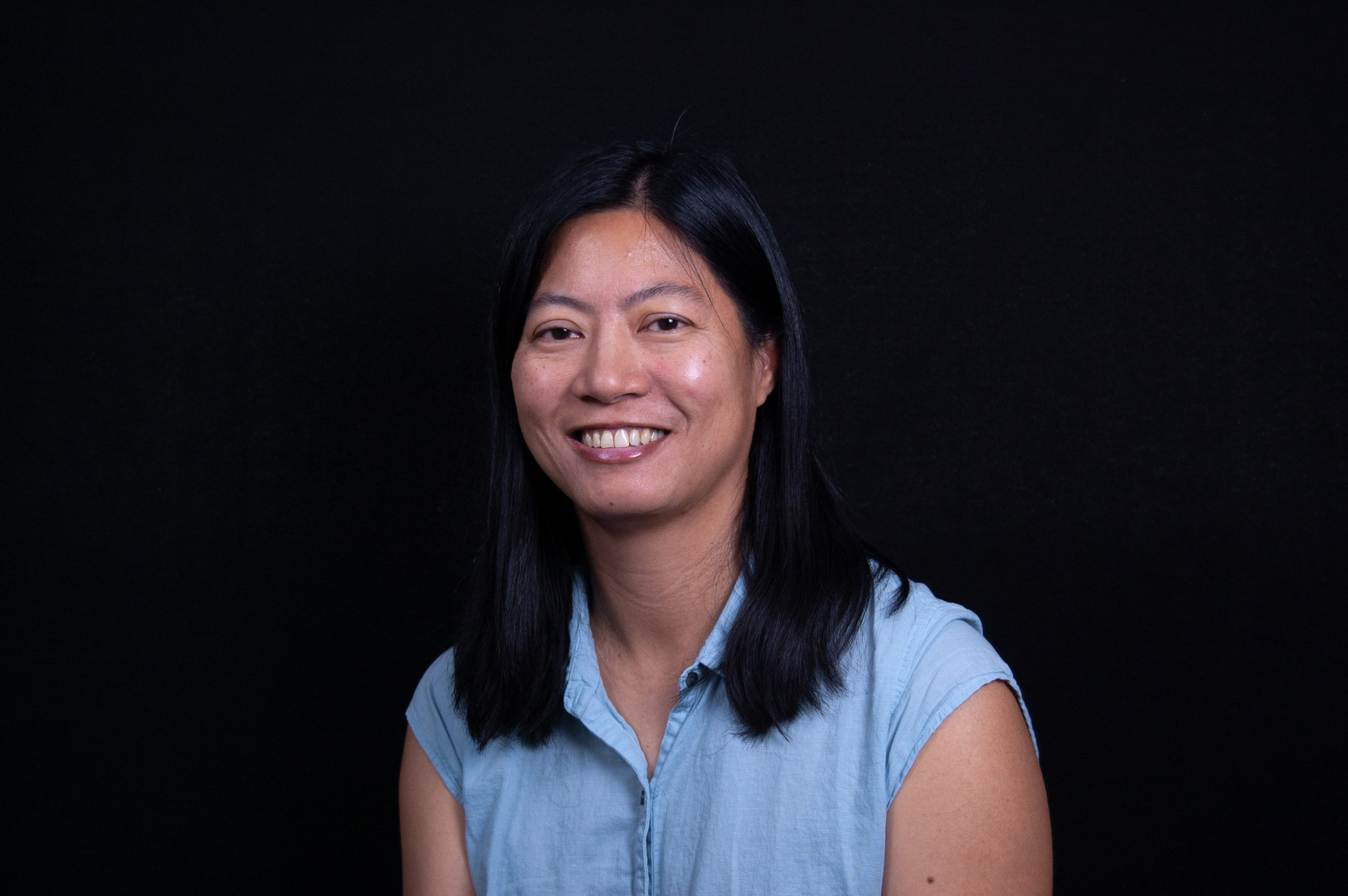
Helen Huang
Associate Professor
Lead of the Disability, Aging and Technology Cluster
Email: hjhuang@ucf.edu
Phone: 407-823-4843
Office: ENG I, Room 416
Office Hours: Tuesdays, 1-4 p.m. and Thursdays, 9 a.m.-12 p.m.
- Biography
- Research
- Publications
- Awards
- Organizations
- Courses
- News
Helen J. Huang received her B.S. in materials science and engineering at the Massachusetts Institute of Technology, and her M.S. and Ph.D. in biomedical engineering at the University of Michigan, Ann Arbor. She worked at Michelin North America as a materials engineer prior to her graduate studies. She was a postdoctoral fellow on the University of Colorado NIH T32 Aging Grant, and an assistant research scientist in the Human Neuromechanics Laboratory directed by Daniel Ferris at the University of Michigan, prior to joining UCF in December 2015.
Huang directs the UCF Biomechanics, Rehabilitation, and Interdisciplinary Neuroscience Laboratory. Members of the BRaIN Lab team include students from biomedical engineering, mechanical engineering, electrical engineering, and biomedical sciences. The BRaIN team studies motor adaptation and neuromechanics of gait and locomotor tasks. Their research currently focuses on investigating brain dynamics underlying motor adaptation, gait, balance and interlimb coordination in young and older adults. The BRaIN team also works on developing robotic exercise devices for gait rehabilitation and fall interventions, and on developing new methods for recording and analyzing electroencephalography (EEG) and electromyography (EMG).
- Biomechanics
- Neuroengineering
- Locomotion
- Motor adaptation
- Gait rehabilitation
- Mobile brain imaging
- Bradford, DE., DeFalco, A., Perkins, ER., Carbajal, I., Kwasa, J., Goodman, FR., Jackson, F., Richardson, LNS.*, Woodley, N., Neuberger, L., Sandoval, JA., Huang, HJ. +, & Joyner, KJ. (2022). Whose Signals Are Being Amplified? Toward a More Equitable Clinical Psychophysiology. Clinical Psychological Science, 21677026221112117. https://doi.org/10.1177/21677026221112117
- Li, J., and Huang, HJ. “Small Directional Treadmill Perturbations Induce Differential Gait Stability Adaptation.” Journal of Neurophysiology 127 (1): 38–55. (2022) https://doi.org/10.1152/jn.00091.2021
- Castano, CR. & Huang, HJ. Speed-related but not detrended gait variability increases with more sensitive self-paced treadmill controllers at multiple slopes. PLoS One 16, e0251229 (2021). doi: http://dx.doi.org/10.1371/journal.pone.0251229
- Shirazi, SY. & Huang, HJ. Differential Theta-Band Signatures of the Anterior Cingulate and Motor Cortices During Seated Locomotor Perturbations. IEEE Trans. Neural Syst. Rehabil. Eng. 29, 468–477 (2021). doi: 10.1109/TNSRE.2021.3057054
- Li, J., Wang, P. & Huang, HJ. Dry Epidermal Electrodes Can Provide Long-Term High Fidelity Electromyography for Limited Dynamic Lower Limb Movements. Sensors 20, 4848 (2020). doi: 10.3390/s20174848
- Shirazi, SY. & Huang, HJ. More Reliable EEG Electrode Digitizing Methods Can Reduce Source Estimation Uncertainty, but Current Methods Already Accurately Identify Brodmann Areas. Front. Neurosci. 13, 1159. doi: 10.3389/fnins.2019.01159
- Wang X, Li J, Song H, Huang H, and Gou J (2018) Highly Stretchable and Wearable Strain Sensor Based on Printable Carbon Nanotube Layers/Polydimethylsiloxane Composites with Adjustable Sensitivity. ACS Applied Materials & Interfaces. doi: 10.1021/acsami.7b17766
- Banks CL, Huang HJ, Little VL, Patten C (2017) Electromyography Exposes Heterogeneity in Muscle Co-Contraction following Stroke. Frontiers in Neurology – Stroke. 2017;8. Article 699. doi: 10.3389/fneur.2017.00699
- Shadmehr R, Huang HJ, Ahmed AA (2016). A Representation of Effort in Decision-Making and Motor Control. Current Biology. 26(14):1929-34. doi: 10.1016/j.cub.2016.05.065.
- Kline JE, Huang HJ and Ferris DP (2016) Cortical spectral activity and connectivity during active and viewed arm and leg movement. Frontiers in Neuroscience. 10:91. doi: 10.3389/fnins.2016.00091.
- Snyder KL, Kline JE, Huang HJ, and Ferris DP (2015). Independent component analysis of gait-related movement artifact recorded using EEG electrodes during treadmill walking. Frontiers in Human Neuroscience. 9:639. doi: 10.3389/fnhum.2015.00639. PubMed PMID: 26648858.
- Kline JE, Huang HJ, Snyder KL, and Ferris DP (2015). Isolating gait-related movement artifacts in electroencephalography during human walking. Journal of Neural Engineering. 12(4):046022. doi: 10.1088/1741-2560/12/4/046022. PubMed PMID: 26083595.
- National Institutes of Health (NIH) / National Institute on Aging (NIA) R25, “Investigators from Novices, a Transdisciplinary Research Education Program to Increase Diversity (INTREPID) in Aging Research” Role: PI (one of the multi-PIs). 2023-2028
- 2021 UCF Reach for the Stars
- 2021 UCF Research Incentive Award
- 2020 UCF Luminary Award
- 2020 American Society of Biomechanics (ASB) President’s Award
- 2020 National Science Foundation (NSF) CAREER Award, “CAREER: Leveraging electroencephalography (EEG) artifacts for multimodal neuromechanics”
Invited participant to the U.S. National Academy of Engineering China-America Frontiers of Engineering, 2019 - National Institutes of Health R01 for “Adaptation of Brain and Body Responses to Perturbations during Gait in Young and Older Adults,” principal investigator, 2017-2022
- National Institutes of Health Training in Grantsmanship for Rehabilitation Research Fellow, 2017
- UCF Office of Research and Commercialization In-House Research Award for “Brain Dynamics of Losses of Balance during Walking,” principal investigator, 2017
- Society for the Neural Control of Movement (NCM), member
- Institute of Electrical and Electronics Engineers, Engineering in Medicine and Biology Society member
- American Society of Biomechanics member
- Society for Neuroscience member
- BME 6215: Advanced Biomechanics
- BME 3211: Engineering Biomechanics
- BME 6500: Bioinstrumentation
- BME 6935: Topics in Biomedical Engineering
- MAE Students Win 2024 Student Research Week Awards
- UCF Celebrates International Women in Engineering Day, Featuring the BRaIN Lab
- New UCF Project Launched to Engage a Diverse, New Generation of Researchers to Aid Aging Populations
- Aerospace and Mechanical Engineering Graduate Programs Climb in U.S. News Rankings, Biomedical Engineering Ranks for First Time
- Four MAE Faculty Members Receive Promotion
- MAE Students Win Top Awards During Student Research Week
- UCF’s Brightest Shine During Luminary Awards
- UCF Graduate Honored by NSF for Engineering, Locomotion Work
- Reach for the Stars Honoree Pushes the Boundaries of Biomechanics
- MAE Students, Faculty Honored at Founder’s Day Convocation